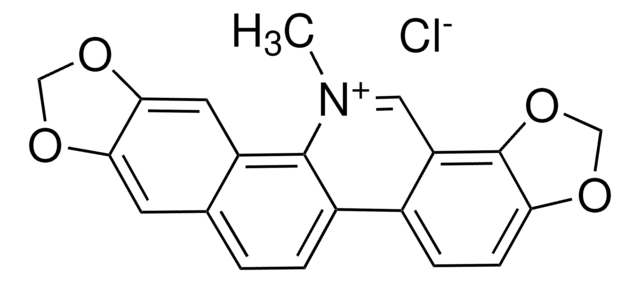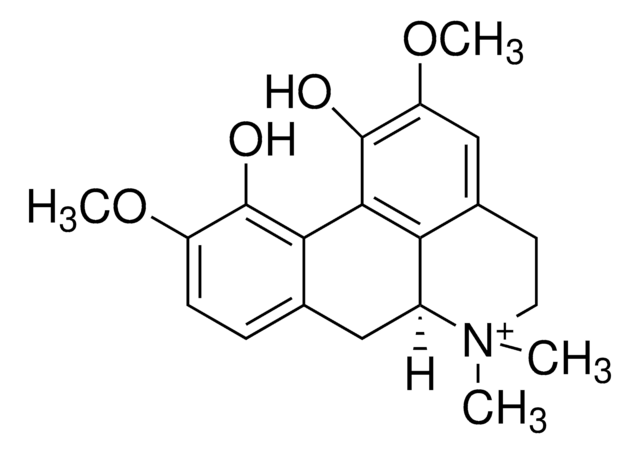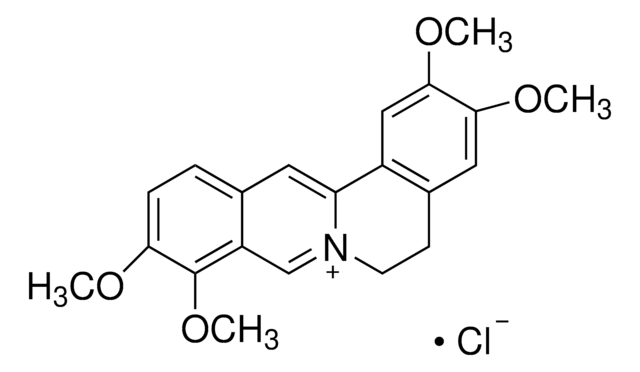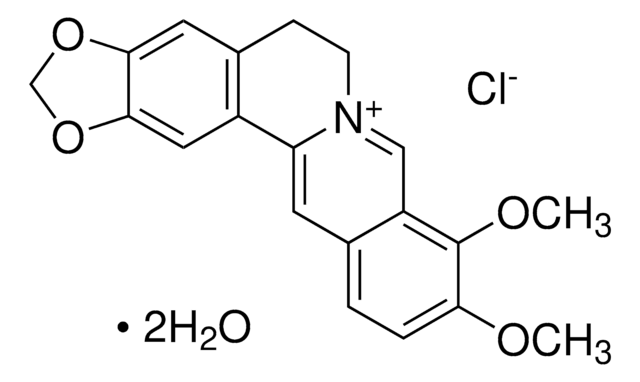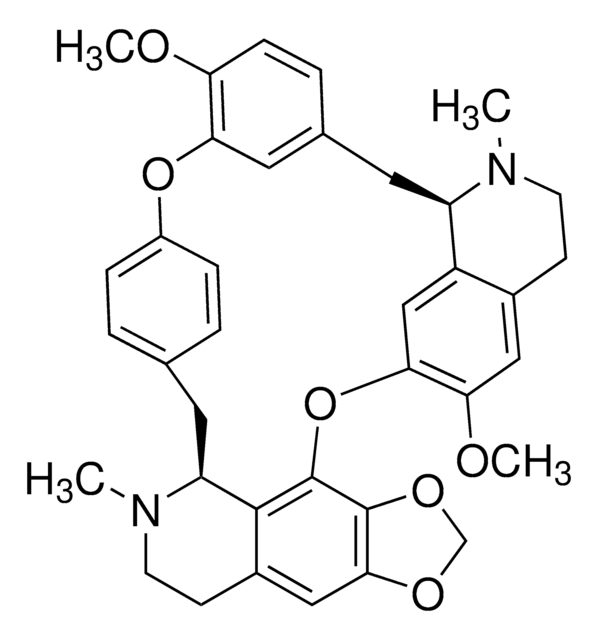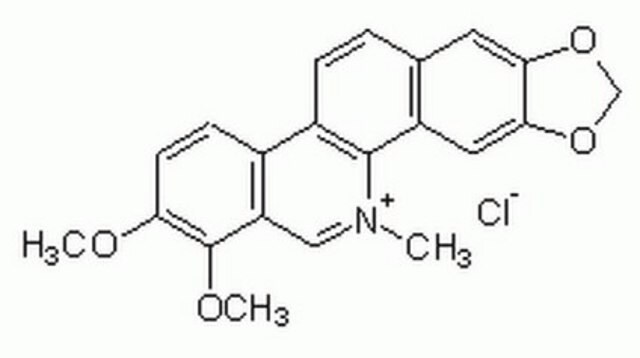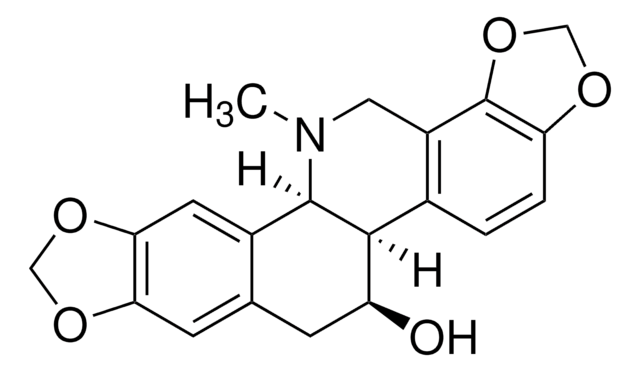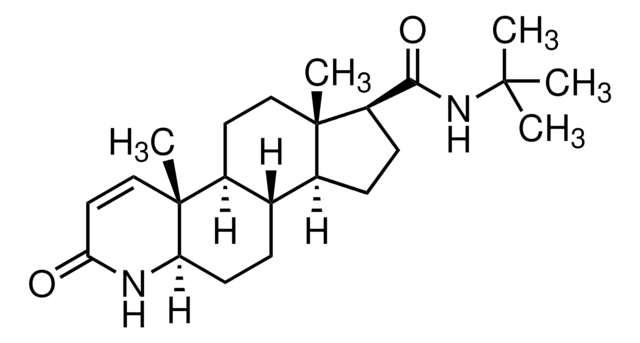SMB00314
Coptisine Chloride
≥98% (HPLC)
Synonym(s):
Coptisine chloride, Bis(methylenedioxy)protoberberine chloride, Coptisin Chloride
About This Item
Recommended Products
Quality Level
Assay
≥98% (HPLC)
form
powder
application(s)
metabolomics
vitamins, nutraceuticals, and natural products
storage temp.
−20°C
SMILES string
C1(OCO2)=C2C=C(CC[N+]3=C4C=C5C(C(OCO6)=C6C=C5)=C3)C4=C1.[Cl-]
InChI
1S/C19H14NO4.ClH/c1-2-16-19(24-10-21-16)14-8-20-4-3-12-6-17-18(23-9-22-17)7-13(12)15(20)5-11(1)14;/h1-2,5-8H,3-4,9-10H2;1H/q+1;/p-1
InChI key
LUXPUVKJHVUJAV-UHFFFAOYSA-M
Related Categories
General description
Application
Biochem/physiol Actions
Signal Word
Danger
Hazard Statements
Precautionary Statements
Hazard Classifications
Acute Tox. 2 Inhalation - Acute Tox. 2 Oral
Storage Class Code
6.1A - Combustible acute toxic Cat. 1 and 2 / very toxic hazardous materials
WGK
WGK 3
Flash Point(F)
Not applicable
Flash Point(C)
Not applicable
Regulatory Listings
Regulatory Listings are mainly provided for chemical products. Only limited information can be provided here for non-chemical products. No entry means none of the components are listed. It is the user’s obligation to ensure the safe and legal use of the product.
JAN Code
SMB00314-100MG:
SMB00314-VAR:
SMB00314-25MG:
SMB00314-BULK:
Choose from one of the most recent versions:
Already Own This Product?
Find documentation for the products that you have recently purchased in the Document Library.
Customers Also Viewed
Our team of scientists has experience in all areas of research including Life Science, Material Science, Chemical Synthesis, Chromatography, Analytical and many others.
Contact Technical Service